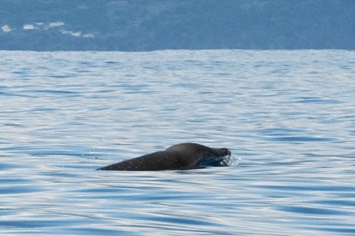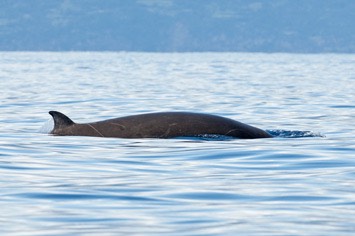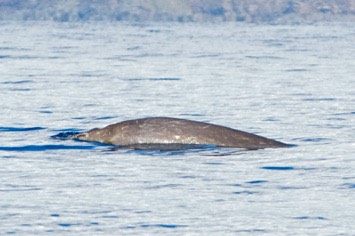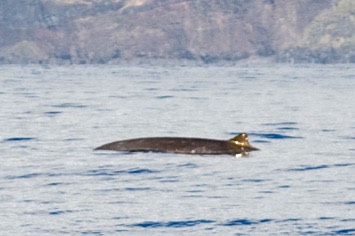Rising dramatically from the abyssal depths of the mid Atlantic, the Azores archipelago are a magnet for a wide range of whale and dolphin species. We describe general details of our trip to Pico in 2010 in the travel reports section - this page is dedicated to the cetacean species we encountered.
Female sperm whales (Physeter macrocephalus) and their offspring are found off Pico all year round, and are sighted on most days. The much bigger males join them during the winter months. It is possible to get really close to these magnificent giants when they surface to replenish their oxygen supplies. After resting at the surface for several minutes they fluke up and dive, staying down for 30 minutes or more, reaching depths of 1000 m or more!
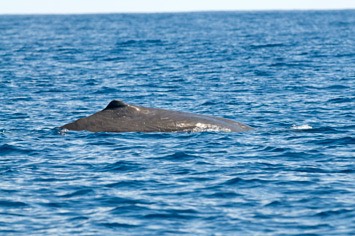
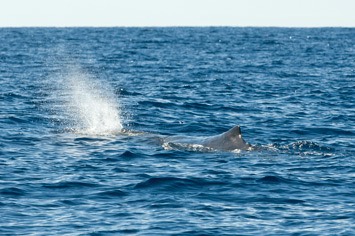
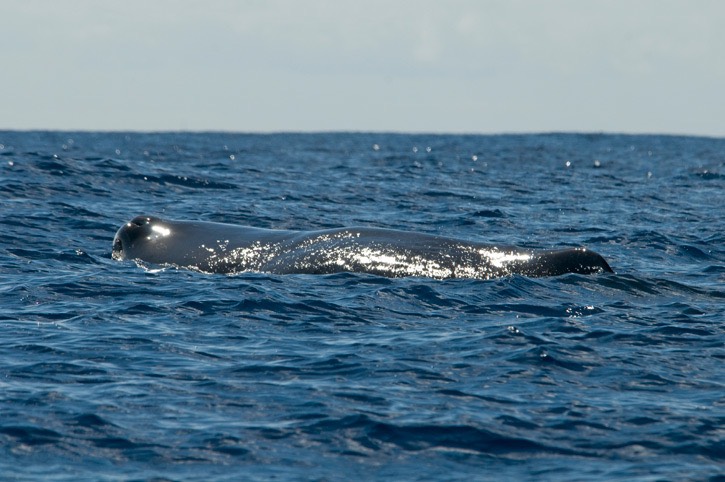
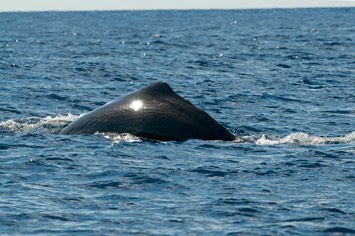
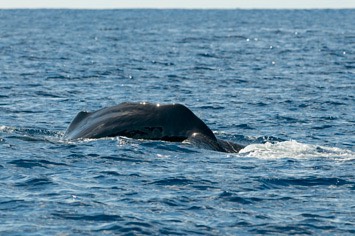
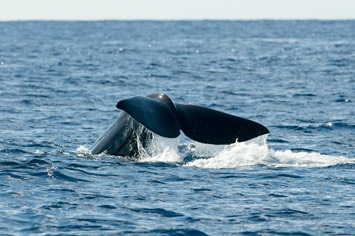
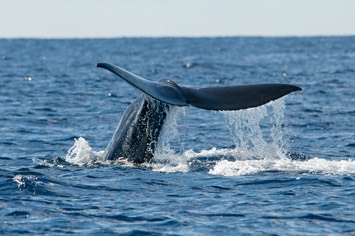
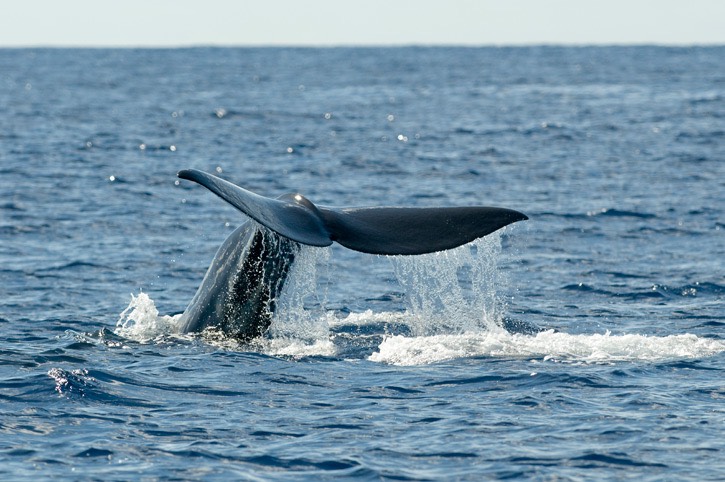
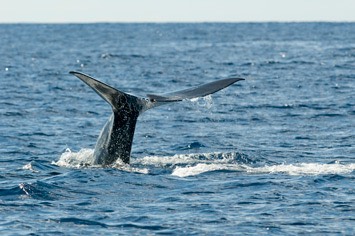
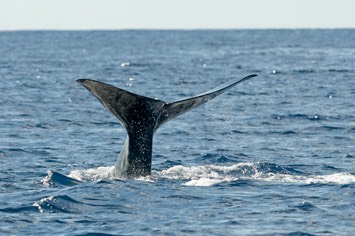
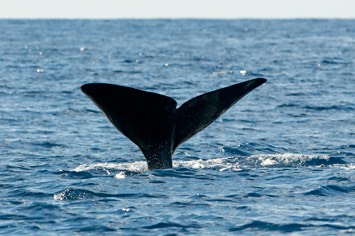
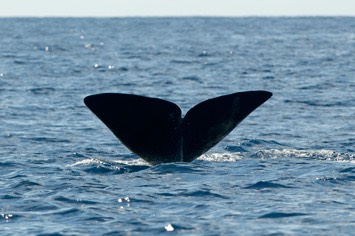
Short-finned pilot whales (Globicephalus macrorhynchus) live in deeper waters and are seen quite often off Pico. On grey days they appear all black, but in good light one can see their pale markings.
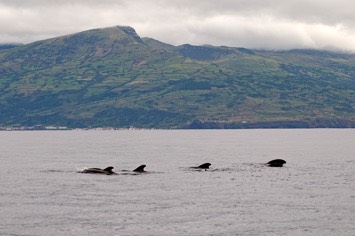
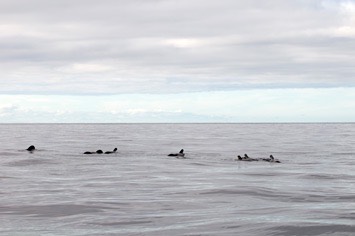
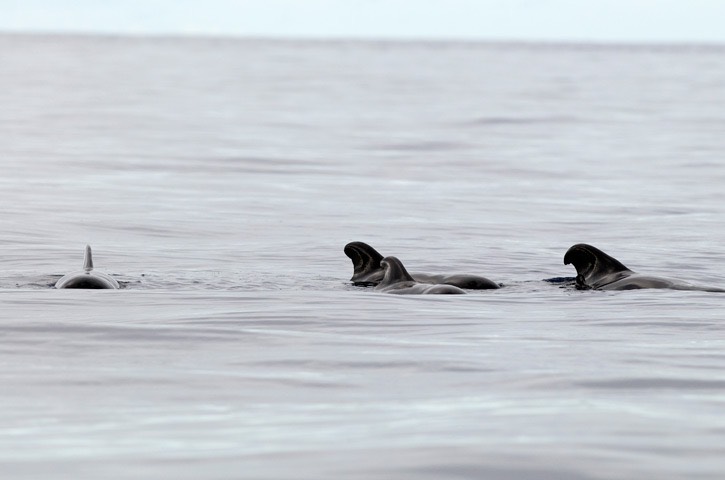
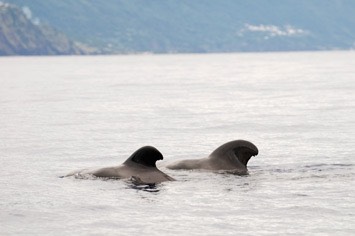
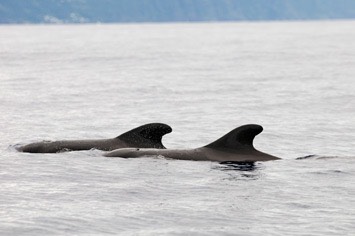
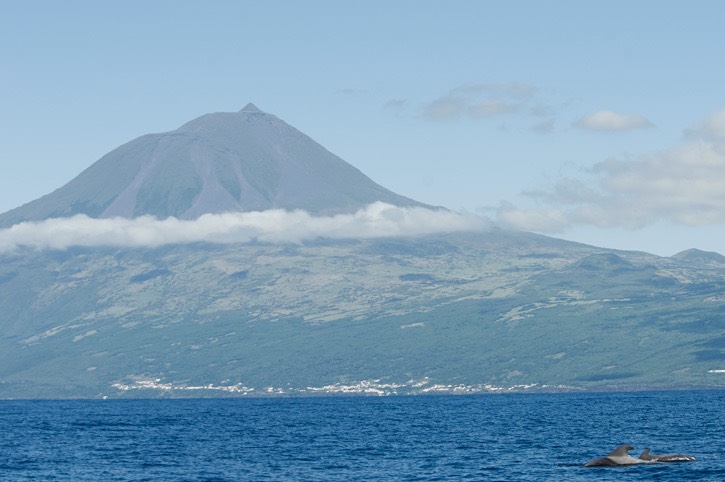
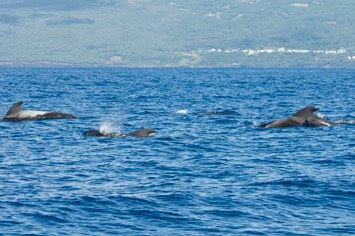
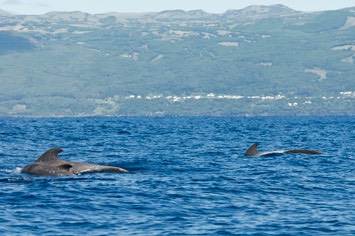
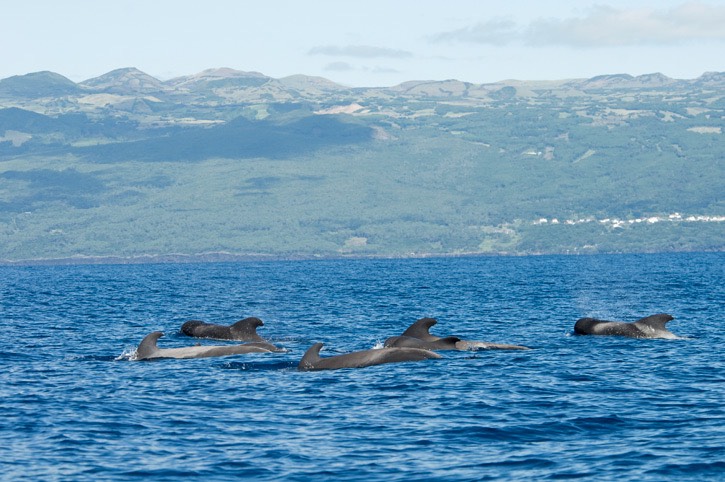
On one occasion, two youngsters approached our boat, but when they got too close, one of the females intervened and pushed them away.
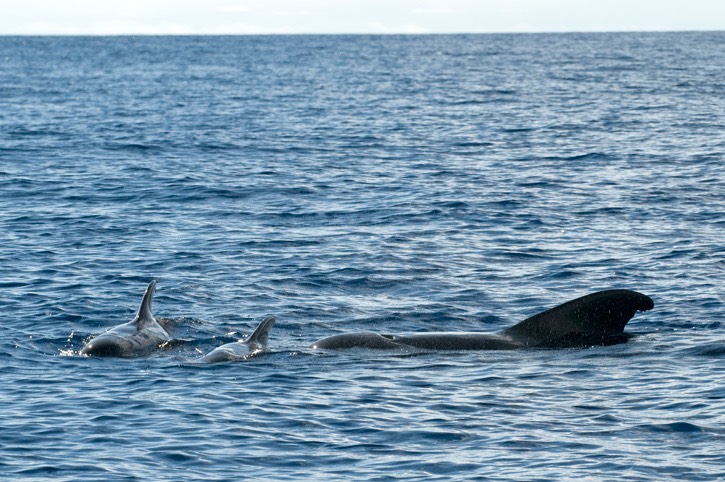
80 percent of the world’s Cory’s shearwaters breed on the Azores. When dolphins herd fish into a ball, the shearwaters often gather in dense flocks to take part in the feast. These aggregations of birds can be visible from many miles. These birds can be very noisy, and actually you can hear shearwater noises all through the night. Soon we also saw quite a few dolphins that were feeding among the birds.
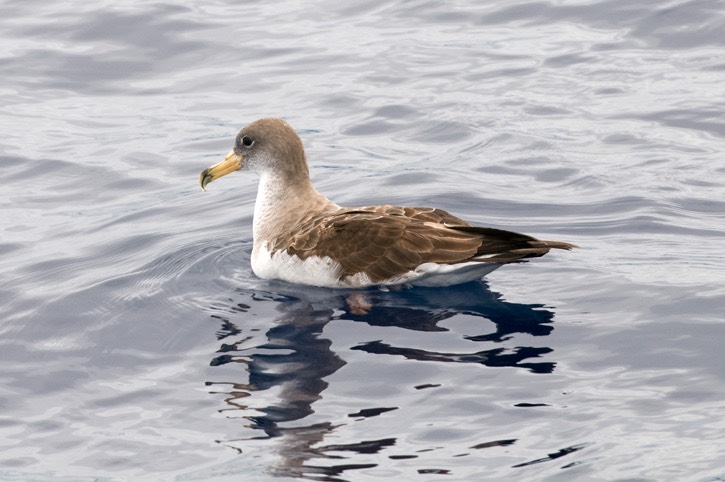
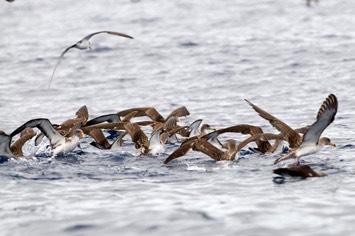
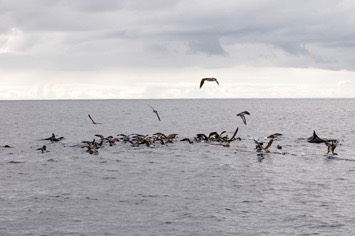
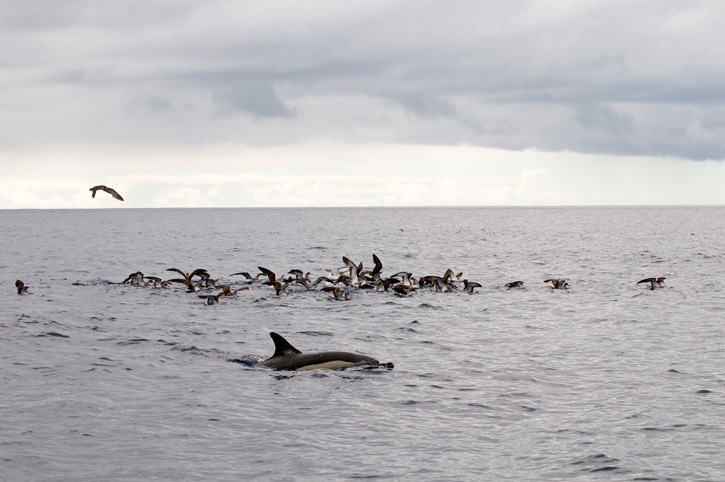
Short-beaked common dolphins (Delphinus delphis) are enthusiastic bow-riders, providing excellent opportunities for photography. Sometimes when they surfaced, the bubbles from exhaled breath stayed curiously intact in the air.
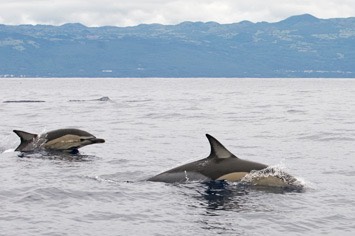
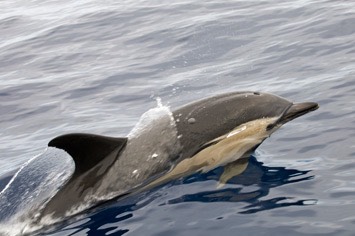
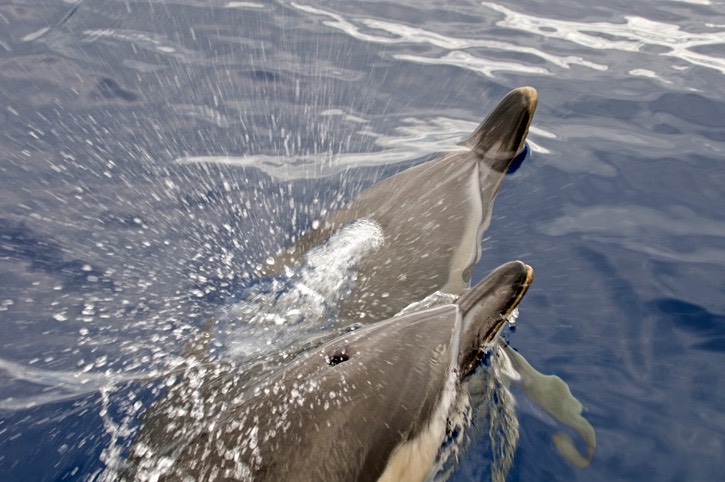
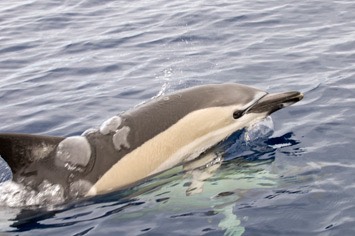
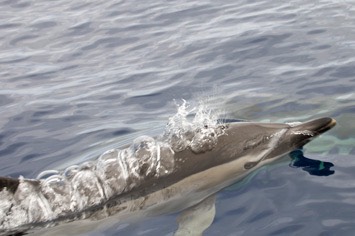
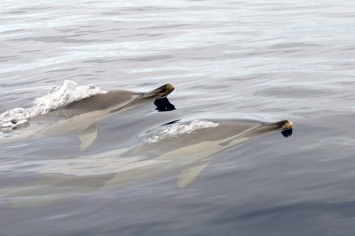
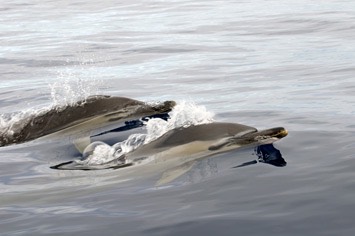
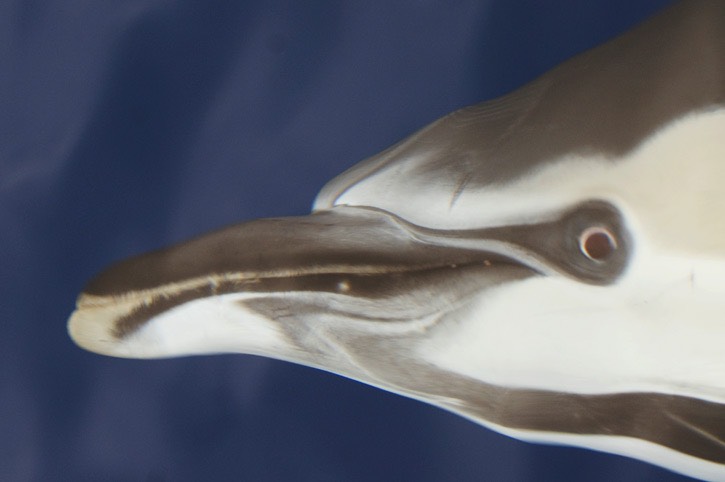 Atlantic spotted dolphins (Stenella frontalis) are also very common around Pico at certain times of the year. These young animals are unspotted, the distinctive markings of this species develop with age.
Atlantic spotted dolphins (Stenella frontalis) are also very common around Pico at certain times of the year. These young animals are unspotted, the distinctive markings of this species develop with age.
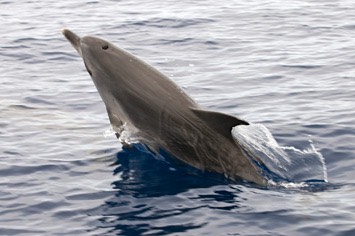
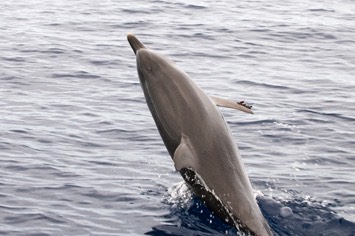
Striped dolphins (Stenella coeruleoalba) are fast and furious swimmers but tend to be relatively shy of boats and bow-riding.
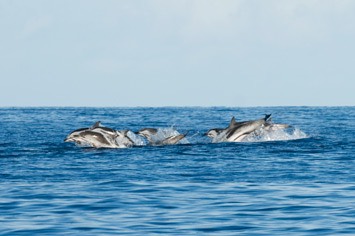
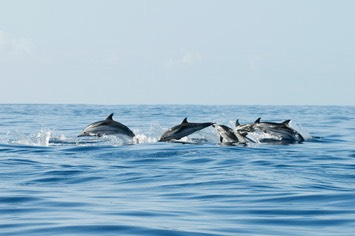
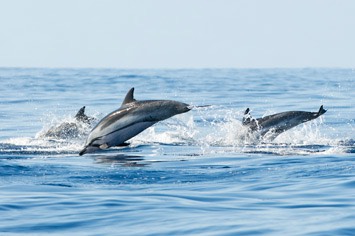
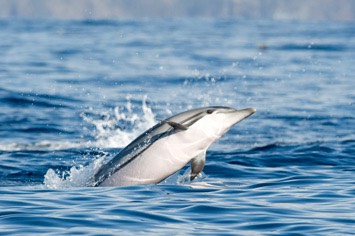
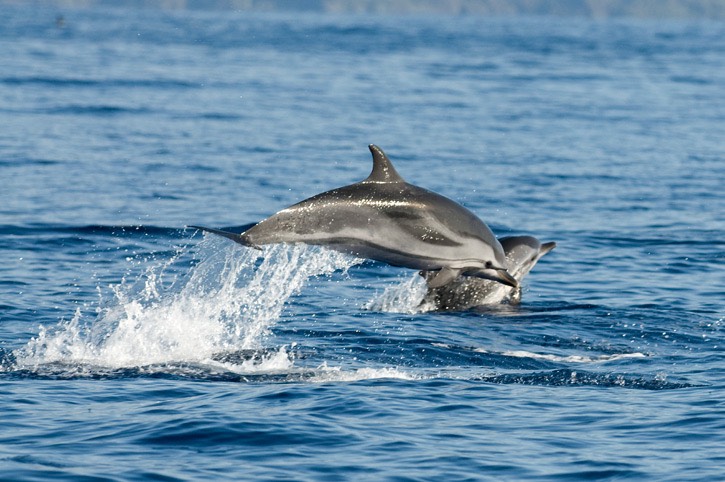
Bottlenose dolphins (Tursiops truncatus) are one of the most wide-spread dolphin species in the world. The rake marks on their backs and dorsal fins are evidence of their somewhat rough interactions with each other.
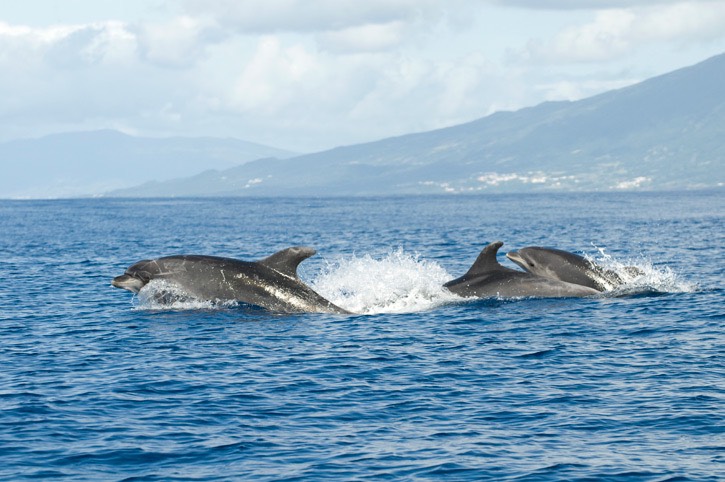
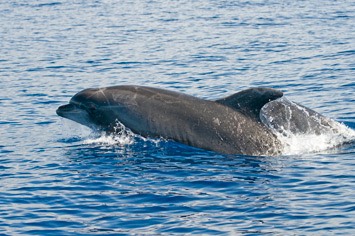
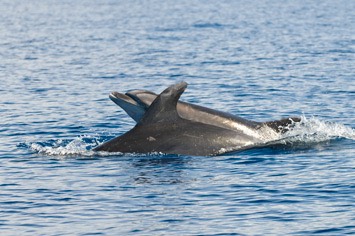
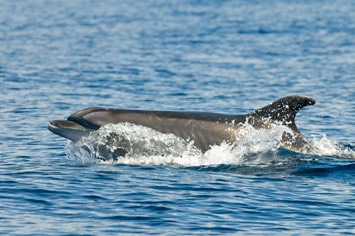
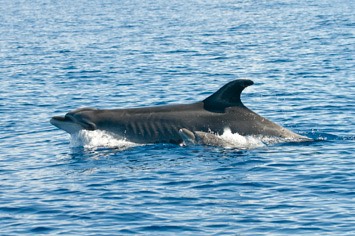
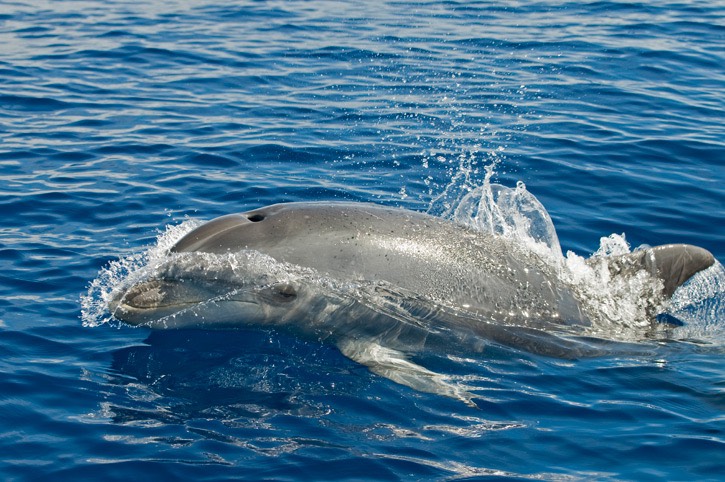
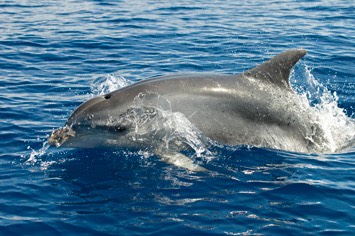
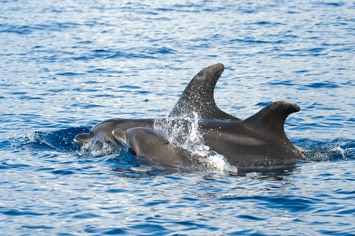
Risso's dolphins (Grampus griseus) are commonly seen off Pico and there is a long term research project investigating this population (www.nova-atlantis.org). Risso's dolphins are born dark grey, but their skin appears to scar easily, forming white marks which accumulate with age, so they get progressively whiter. The scars can be used to identify individuals and so far over 1200 different animals have been photo-identified around Pico.
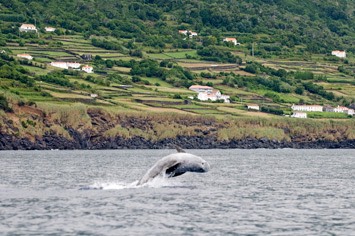
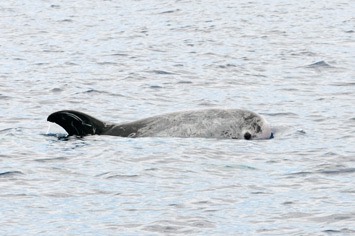
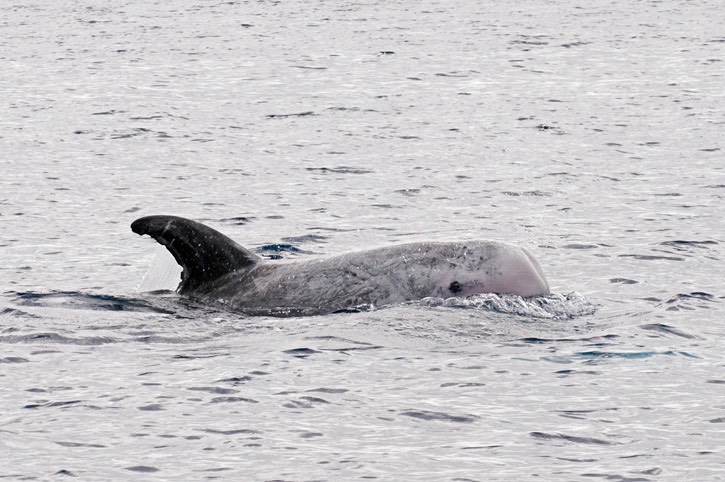
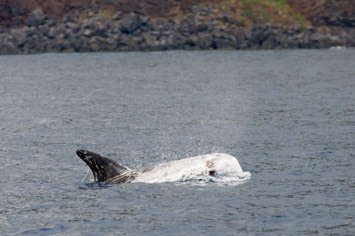
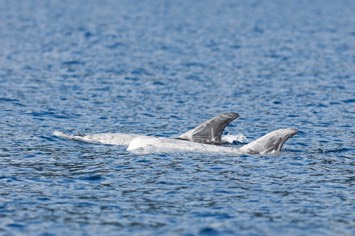
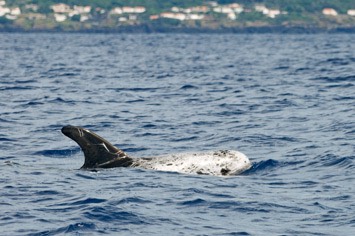
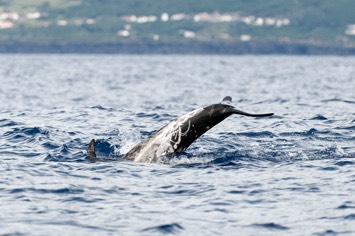
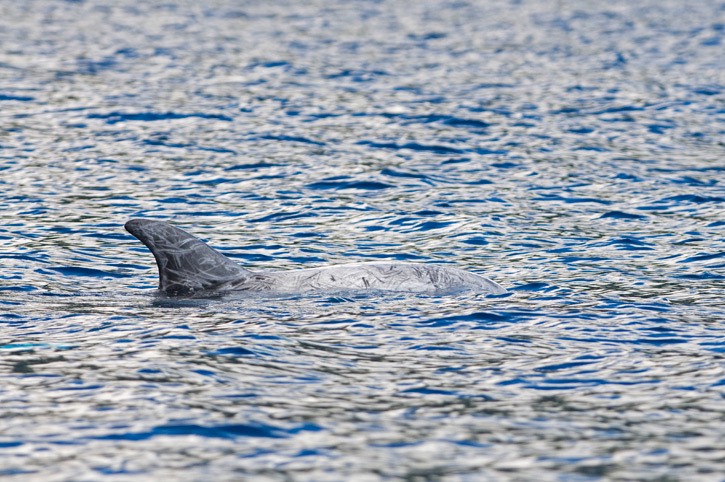
Coalition of males often patrol in a group, like those below.
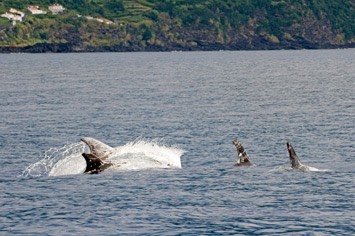
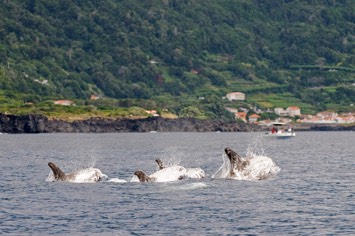
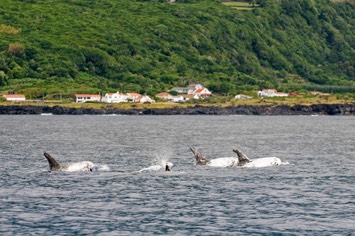
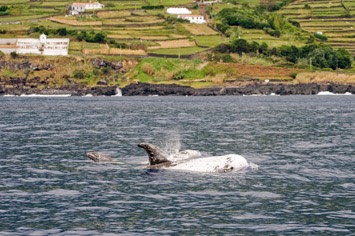
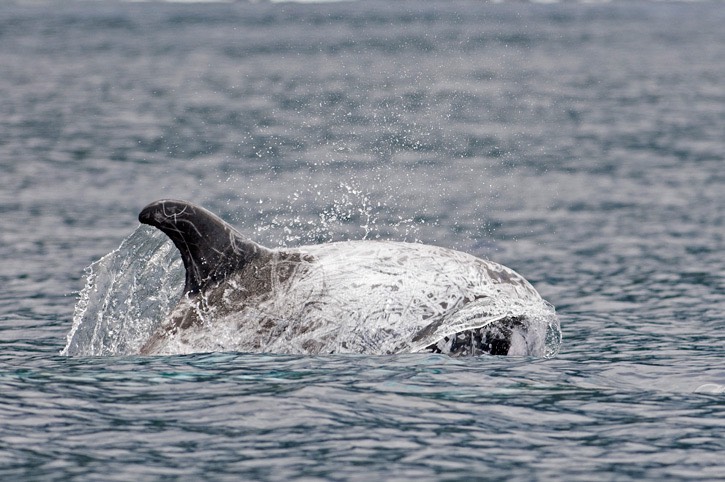
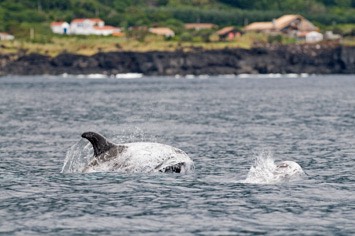
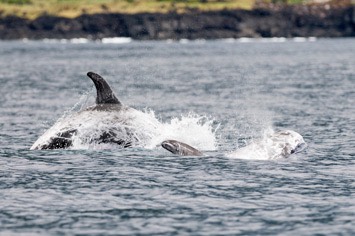
Pico is a great spot for finding beaked whale as deep water habitats are easily reached not far from shore. Only a few of these enigmatic species are easily identifiable, usually one has to see the head and the shape of the beak to do so. We identified three beaked whale species: Cuvier's beaked whale (Ziphius cavirostris), Gervais beaked whale (Mesoplodon europaeus) (top photos) and Blainville's beaked whale (Mesoplodon densirostris) (bottom photos) and probably also saw a fourth species, namely Sowerby's beaked whale (Mesoplodon bidens). Gervais' beaked whale was a special treat as it is rarely identified or photographed at sea, and even text books rarely have photographs of these whales, so we were very pleased to get some half-decent pictures of this elusive species.
